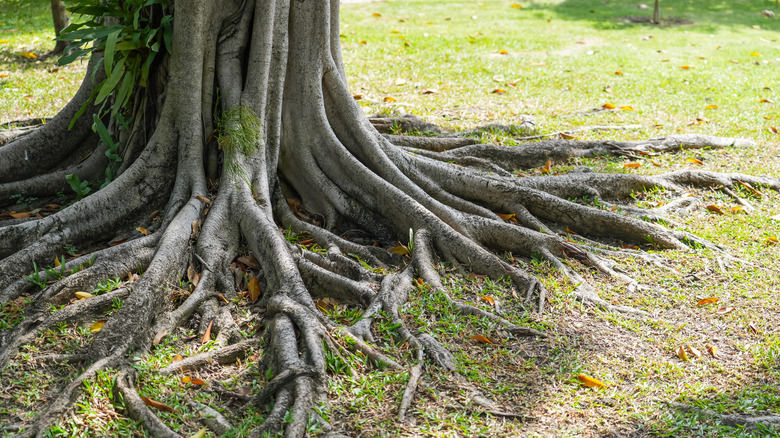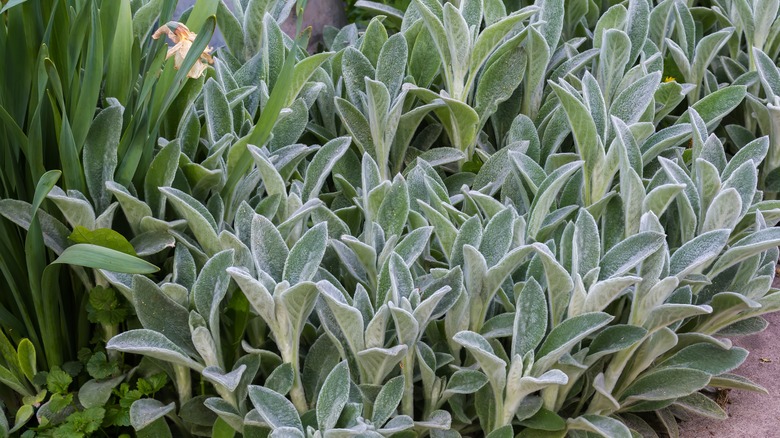Lamb's Ear Is A Beautiful Way To Cover Unsightly Tree Roots (Here's How)
Do you have a tree in your yard that has unsightly roots sprawling in every direction, mucking up your otherwise gorgeous yard? Then you might already be considering ways to cover it up, but here's the thing –- you need the right plant that will survive in the shade of said tree. One such plant, a flowering ground cover called lamb's ear (Stachys byzantina), is a great pick for just this purpose. Originating from the Middle East, this plant has made a splash in gardens worldwide and is prized for its soft, silvery-green leaves and low-maintenance aspects.
Speaking of low-maintenance, lamb's ear is a hardy plant that thrives in USDA zones 4 through 8, making it adaptable to a variety of climates and it doesn't take much for it to thrive. However, in warmer regions, its resilient nature can become a double-edged sword as it may spread aggressively, potentially overwhelming other plants. As such, it's advisable to consult with your local Department of Environmental Conservation (DEC) or Cooperative Extension before planting to ensure it won't become a nuisance.
Despite this, if you are willing to take the necessary precautions, lamb's ear proves to be an attractive solution for plenty of gardeners who want to beautify unsightly tree roots. It provides such a lovely visual contrast, covering up those ugly roots while creating a gorgeously soft texture that looks good enough to take a nap on! So, how do you start growing lamb's ear? First, you need to understand how and where to grow it!
How do you grow lamb's ear?
When it comes to lamb's ear, these plants can flourish in the full sun or partial shade but can survive deeper shade without fully dying off. That means you can and should plant them under trees that allow at least a little bit of sun to reach their base throughout the day for best results.
In regards to planting lamb's ear, it is best to use moist but well-draining soil. Begin by digging a hole as deep as the plant's original pot, then firm the soil around the root ball and water generously. Its low-maintenance nature means that, after it's established, it requires watering only during prolonged dry periods, and there's no need for additional feeding. To keep the plant in prime condition, simply deadhead spent blooms in autumn and tidy the foliage as needed.
While lamb's ear is generally pest and disease-free, the leaves can wilt and rot in overly damp conditions. To prevent this, remove any fading leaves quickly so that they don't continue draining resources from the main plant, and reduce watering. Should drainage pose a problem, which can happen under large trees, it might be necessary for you to enhance soil aeration, typically by placing a layer of soil mixed with perlite or coarse sand at the hole's base to increase the ability for water to drain away from the roots. By following these simple guidelines, you should have a gorgeous ground cover that hides those ugly roots in no time!

